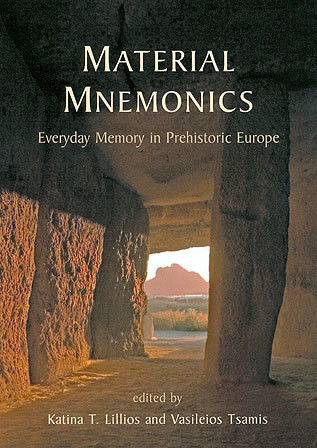
Format: Paperback
Pages: 192
ISBN: 9781842179666
Pub Date: 12 Sep 2010
Illustrations: b/w illus
Description:
How did ancient Europeans materialise memory? Material Mnemonics: Everyday Practices in Prehistoric Europe provides a fresh approach to the archaeological study of memory. Drawing on case studies from the British Isles, Scandinavia, central Europe, Greece, Italy and the Iberian Peninsula that date from the Neolithic through the Iron Age, the book's authors explore the implications of our understanding of the past when memory and mnemonic practices are placed in the center of cultural analyses.
They discuss monument building, personal adornment, relic-making, mortuary rituals, the burning of bodies and houses and the maintenance of domestic spaces and structures over long periods of time. Material Mnemonics engages with contemporary debates on the intersection of memory, identity, embodiment, and power and challenges archaeologists to consider how materiality both provokes and constrains the mnemonic processes in everyday life.

Format: Paperback
Pages: 286
ISBN: 9789088900433
Pub Date: 24 Aug 2010
Illustrations: col illus throughout
Description:
Flint was the primary raw material used for tools until c. 4000 years ago. Its properties allow the production of very sharp edges, which made it essential in many activities related to craft and subsistence.
The fact that flint tools have been used for a long period of time almost everywhere in the world makes them an important source of information in the study of prehistory. Several general questions about this material are of interest to archaeologists: where was the raw material obtained? How can we distinguish between man-made artefacts and natural pieces of flint? What techniques can be used to work flint, and how can we recognise them? How were the different tools used in an effective way? This book tries to answer all of these questions by describing the subsequent stages: acquisition of raw material, flint knapping techniques, recognition of pseudo-artefacts and geofacts, typology of common tool types found in northwestern Europe and discussion of the most effective way to use these tools. The book is richly illustrated with full colour figures. Text in Dutch.

Format: Paperback
Pages: 82
ISBN: 9789490258023
Pub Date: 30 Jul 2010
Imprint: Karwansaray Publishers
Illustrations: 58
Description:
Ancient Warfare Special 2: 'Core of the Legion' examines the history, structure, and tactics of the centuria, a fundmanetal building block of the ancient Roman army. This special contains the following articles: - Paul McDonnell-Staff, 'Core of the legion - Historical introduction' - Jona Lendering, 'Hadrian and his soldiers - The Lambaesis Inscription' - Duncan B. Campbell, 'Backbone of the legions - Some centurions and their careers' - Graham Sumner, 'The centurio from Colchester - Reconstructing Marcus Favonius Facilis' - Philip Matyszak, 'Learning on the job and in camp - Training the centuria' - Ross Cowan, 'The centuria in battle - Tactical organisation and combat' - Michael J.
Taylor, 'Records on bark, sherds and papyrus - Small unit administration in the Roman army' - Christian Koepfer, 'Keeping the legionaries clothed and fed - Logistics of the centuria' - Graham Sumner, 'Dressed for the occasion - three legionaries brought to life' - Michael C. Bishop, 'Keeping the weapons - Acquisition, ownership and storage' - Michael Thomas, 'With bodies completely protected - Roman armour of the 1st-2nd centuries AD' - Suggestions for museums

Format: Paperback
Pages: 256
ISBN: 9781842174043
Pub Date: 10 Jul 2010
Series: Neolithic Studies Group Seminar Papers
Illustrations: 101 b/w illus, 13 colour illus, 5 tables
Description:
This volume, the tenth published collection of seminar papers from the Neolithic Studies Group, is based upon a conference that took place at the British Museum in November 2008. The meeting aimed to consider the chronology and development of Neolithic round mounds; their changing form and use; their relationships to contemporary cultural, ancestral and natural landscapes; the extent to which they provide scope for identifying local and regional social organization; and, not least, why they were round. Following the conference, further papers were offered for this edited volume, widening and broadening the initial discussion.
The papers are arranged in rough geographic order starting in the north and working southwards before heading across the Irish Sea and then the Atlantic. Following a wide-ranging discussion of round mounds across the world, two papers discuss aspects of Scottish round mounds, before moving down to the Isle of Man, the Neolithic round mounds of the Yorkshire Wolds, Liffs Low in the Derbyshire Peak District, and round mounds on the Cotswolds. The volume then moves to Wessex, starting with a discussion of Silbury Hill, and followed by a re-evaluation of the Great Barrow at Knowlton, Conquer Barrow at Mount Pleasant, and the Hatfield Barrow at Marden. How archaeologists and heritage managers choose to interpret round mounds is the subject of the next paper, using Silbury Hill as the primary case study. This is followed by a broad discussion of circular traditions, particularly formative henges, in Wales and adjacent counties, round burial mounds in the Boyne Valley, Ireland, such as Knowth, Dowth and Newgrange, and Irish round mounds containing portal tombs. By way of comparison with the evidence from the British Isles, the volume then crosses over to North America for a broad discussion of mound-building traditions there. Rounding off the volume is another wide-ranging essay on the nature of round mounds, which challenges our very understanding and interpretation of them.

Format: Paperback
Pages: 32
ISBN: 9782815100182
Pub Date: 01 Jul 2010
Imprint: OREP
Illustrations: Fully illustrated throughout
Description:
Having become king of England at the battle of Hastings in 1066, William of Normandy would go on to found a genuine empire. His reign lasted 21 years. Amongst his children were two kings, a Duke, an Abbess, and two Countesses.
Upon his death, his descendants tore each other apart, and his empire was fragmented until the accession of the Plantagenets, who extended the Anglo-Norman territory as far as the foothills of the Pyrenees. This book recounts the life of his principal descendants from Robert Courteheuse to the Empress Matilda. This is a French Language book.
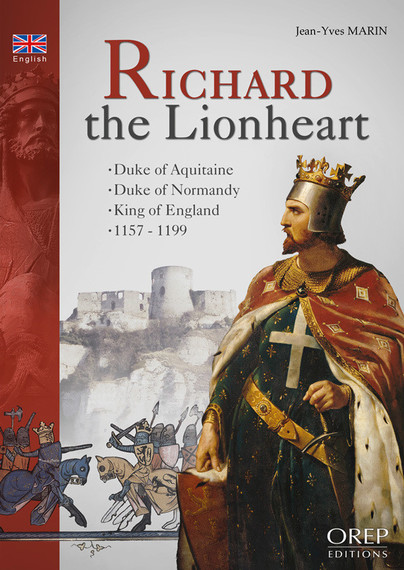
Format: Paperback
Pages: 32
ISBN: 9782815100335
Pub Date: 01 Jul 2010
Imprint: OREP
Illustrations: Full-colour illustrations throughout
Description:
The name of Richard the Lionheart is familiar to us all. Curiously, this legendary figure is more often associated with Aquitaine and the Holy Land than with Normandy. A worthy descendant of William the Conqueror, Richard I maintained Normandy within the Plantagenet Empire, by countering the ambitious plans of the King of France, Philip Augustus.
His violent and untimely death was to lead to Normandy's annexation to France. The Anglo-Normand territory that "straddled the sea", and could well have offered an alternative to the national monarchic construction, was never to recover.

Format: Paperback
Pages: 272
ISBN: 9781842174050
Pub Date: 30 Jun 2010
Illustrations: 159 b/w & colour illus, 2 tables
Description:
This volume derives from a workshop held at the University of Kalmar (now Linnaeus University), Sweden between the 20-24 of October 2008. The aim of this gathering was to provide a forum for rock art researchers from different parts of northern Europe to discuss traditional as well as current interpretative trends within rock art research. Changing Pictures aims to return to traditional interpretative notions regarding the meaning and significance of rock art to investigate if and why any information had been left behind to recover and rethink.
During the last decades, there has been an immense global interest among archaeologists and anthropologists in studying rock art. Research in northern Europe, as elsewhere, has intensely explored a manifold of methodological and theoretical perspectives. Most of these studies however, have been published in languages that seldom reach beyond the native speakers of Norwegian, Danish, and Swedish, Russian or Finnish. Therefore an important motivation for this volume is to try to apprise some of the current movements within this field of research and present it for an international audience. These papers explore the relevance of older ideas, such as notions about prehistoric religion, ritual performance, sympathetic magic, animism and totemism, the mindscapes of landscapes etc., as well as the present "state of the art" in order to develop a broader understanding of the phenomenon we call rock art. This aspiration can be seen as a common thread linking the different chapters in this book. Saying that, some, if not all, of the articles presented in this volume challenge the notion "rock art" itself, arguing that sometimes the rock, the "canvas" and rather intangible but equally important sensual encounters, such as sound, echoes, touch and temporal phenomenological changes and the perception of decorated rock art panels, should be regarded, at least, as important as the "art" itself. By reassessing traditional approaches to Scandinavian rock art and creatively reworking these ideas, whilst also addressing significant new concepts such as the agency of rock and the performativity of rock art, this anthology of papers offers not only a snapshot of current debates, but also reflects pivotal changes in the study of rock art.

Format: Paperback
Pages: 176
ISBN: 9781905119325
Pub Date: 30 Jun 2010
Illustrations: 3 illus
Description:
The environmental crisis is one of the most pressing concerns to face the population of the world today. The debate centres on the way in which our current problems are of recent making and how we might fix them. But in reality the issue is far more fundamental and stretches back further in time than many of us might think.
This book traces the origins of our present situation to the changes that came about with the introduction of farming to Britain 6000 years ago and the inexorable course of human development since then. This is a course which has set us on the path to catastrophe. However, there is hope. The book also looks at the much older traits from a way of life long gone in Britain, from the hunter-gatherers who lived here over the millennia before the introduction of farming. These traits, almost forgotten, but never quite lost, are now re-surfacing and may hold many of the keys to our continued existence.

Format: Hardback
Pages: 192
ISBN: 9781842174036
Pub Date: 30 Jun 2010
Illustrations: 86 b/w illus, 8 tables
Description:
The Upper Pleistocene era encompassed a period of dramatic cultural developments in the south-eastern Mediterranean basin. This book highlights and synthesizes the latest research and current scientific debate on the archaeology of this time period in North Africa and the Near East. Recent archaeological research in North Africa has meant this region now plays a decisive role in scientific debate.
After decades of neglect, the archaeological record from North Africa has now been seen to parallel in significance that of the Near East. This book offers an opportunity to observe the Afro-Asian side of the Mediterranean basin as an uninterrupted land, as it was for its Upper Pleistocene inhabitants. Areas of focus include the Out-of-Africa movement of anatomically modern humans (Homo sapiens) into the Levant and the transition from the Middle Palaeolithic/Middle Stone Age to the Upper Palaeolithic/Later Stone Age, during which a change of lifestyle took place, based on plant cultivation and animal husbandry. These topics are of crucial interest to anyone studying human evolution, prehistoric archaeology, anthropology, and palaeo-environmental studies. This volume brings together data as well as perspectives from various scholars, often separated by their areas of interest and location. This volume is complementary to The Mediterranean from 50,000 to 25,000 BP: Turning Points and New Directions edited by M. Camps and C. Szmidt (Oxbow Books, 2009).

Format: Hardback
Pages: 240
ISBN: 9781842173640
Pub Date: 04 May 2010
Illustrations: 111 b/w & colour illus, 15 tables
Description:
Over the last few years, the ways in which we perceive and document rock art have shifted irreversibly. Prehistoric rock art played little part in the development of British and Irish archaeology and was not recognised until the 19th century, when its equivalents in Scandinavia and the Iberian Peninsula were already well known. Previously considered a fringe activity and the work of amateur archaeologists, over the last 30 years the situation has improved considerably, and the appearance of books such as this signify the change.
This volume makes a powerful case for an archaeology that integrates rock art into a wider vision of the past. It brings together the experiences and informed opinions of the key organisations and stakeholders responsible for the conservation, management and accessibility of British rock art. An on-going and exciting period of change is documented here and the main issues that underpin the survival of our prehistoric carved heritage are addressed. Grouped into three sections, the chapters cover the recording, management and presentation of British rock art. The contributions illustrate the wide range of perceptions and approaches to the study, and the diversity of individuals and institutions who have become drawn into this fascinating subject, with independent researchers, heritage managers, artists and academics each bringing a unique perspective. This book aims to both inform new directions in rock art management strategies and provoke further initiatives through which these strategies can be implemented.

Format: Paperback
Pages: 512
ISBN: 9789088900396
Pub Date: 30 Apr 2010
Description:
Central Javanese temples were not built anywhere and anyhow. On the contrary: their positions within the landscape and their architectural designs were determined by socio-cultural, religious and economic factors. This book explores the correlations between temple distribution, natural surroundings and architectural design to understand how Central Javanese people structured the space around them, and how the religious landscape thus created, developed.
Besides questions related to territory and landscape, Degroot's book analyzes the structure of the built space and its possible relations with conceptualized space, showing the influence of imported Indian concepts, as well as their limits. Going off the beaten track, this book explores the hundreds of small sites that scatter the landscape of Central Java. It is also one of very few studies to apply the methods of spatial archaeology to Central Javanese temples and the first in almost a century to present a descriptive inventory of the remains of this region.

Format: Hardback
Pages: 250
ISBN: 9781905905157
Pub Date: 06 Apr 2010
Series: Oxford University School of Archaeology Monograph
Description:
The Najerilla flows from the mountains of the Sierra de la Demanda to the River Ebro in the western part of the province of La Rioja in northern Spain. Here fieldwork and excavations from 2000-2003 examined the varied landscapes of the valley and focused on the excavation of two Iron Age hilltop settlements, Castillo Antiguo and Cerro Molino. The work on Cerro Molino was the most extensive and exposed close-spaced buildings of mud-brick and timber belonging to the Celtiberian period (fourth-second centuries BC) but both hilltops were occupied in earlier periods from the seventh to the fifth centuries.
Full reports are given of the structures, material culture and economy of the settlements together with accounts of extensive field-walking undertaken in the vicinity. The report concludes with a wide-ranging overview of the archaeology and history of this hitherto little known area.
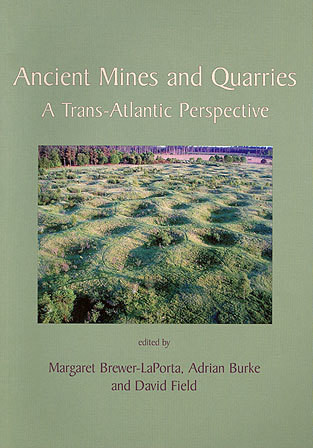
Format: Paperback
Pages: 224
ISBN: 9781842174012
Pub Date: 04 Apr 2010
Illustrations: 99 b/w illus, 10 tables
Description:
Fourteen papers explore a range of issues relating to prehistoric extraction sites, including ethnography, geochemical signatures, the application of neutron activation analysis, exploitation of erratics, excavation, survey and conservation. Topics include quernstone extraction, use of hammers, stages of extraction, geographical and social contexts, changing social regimes, the ritualised nature of journeys to quarry sites, study of petrofabrics, and the effects of joint and cleavage on quarrying practice. Two contributions are in French with extended summaries in English.
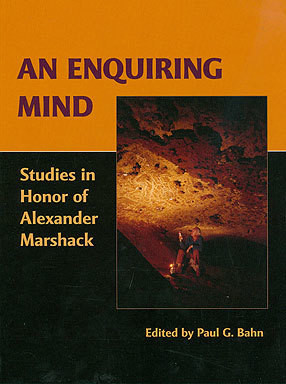
Format: Hardback
Pages: 352
ISBN: 9781842173831
Pub Date: 31 Mar 2010
Series: American School of Prehistoric Research Monograph
Description:
Alexander Marshack single-handedly revolutionized the field of Paleolithic art research. His astounding photographs of portable art objects caused us to see them with fresh eyes, to ask new questions, and to understand their technology and production far more precisely; and his pioneering use of infrared and ultraviolet light in the caves revealed startling new facts about the paintings. In addition, he carried out important, provocative and challenging work on archaeoastronomy, calendar sticks, female imagery, and other topics.
Alexander Marshack was able to do what nobody else ever had before, or perhaps ever will again - i.e. travel all over Europe, visiting not only many decorated caves but also all the portable art objects scattered throughout the continent, including Russia. This unique experience and knowledge, together with his unrivalled and amazing documentation of all this material, made him by far the USA's foremost specialist in Paleolithic imagery. To honor his memory, in this book, scholars from many parts of the world contribute papers about some of the many problems that interested him and to which he made such a massive contribution.

Format: Hardback
Pages: 208
ISBN: 9781842173916
Pub Date: 31 Mar 2010
Illustrations: 8 page colour section, 80 b/w illus, 34 tables
Description:
The communities who lived in the Balkans between 7000 and 4000 Cal. BC have now been the focus of intensive and increasingly inter-disciplinary research for the last forty years. Dwelling between the warm, dry Mediterranean zones of the Aegean and Anatolia and the cooler and snowier Central European heartlands, these communities created distinctive social formations that left enduring marks on today's landscapes.
One of the key trends in these millennia concerned the high value attributed to the exotic, especially if that was represented by objects of striking colour and brilliance. Thus, the preference, wherever possible, for long-term sedentary lifeways was often in counterpoise with strategies for bringing distinctive objects from remote places back to the settlement for local 'domestication'. The prehistoric site of Orlovo has been investigated neither by excavation nor by systematic field walking but by repeated field visits, over many years, and the collection of objects exposed by the plough. The result is an extraordinarily rich and diverse collection of objects whose contexts are poorly known but whose diversity reminds us not so much of an excavated settlement as an excavated Chalcolithic cemetery. This collection has challenged us to develop an approach in which theory was integrated with methodology to propose as complete an interpretation of the site as could be done from an unstructured surface collection. The collection studied in this book is significant for the prehistory not only of South East Bulgaria but also for European prehistory as a whole and its study and publication therefore, sheds light on the worlds of the Neolithic and Chalcolithic communities of the Balkans through the prism of a single site.
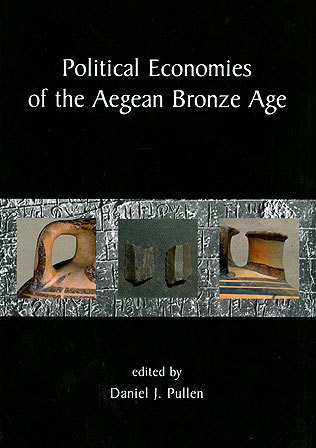
Format: Paperback
Pages: 256
ISBN: 9781842173923
Pub Date: 31 Mar 2010
Illustrations: 42 b/w illus, 15 tables
Description:
This volume brings together an international group of researchers to address how Mycenaean and Minoan states controlled the economy. The contributions, originally delivered at the 2007 Langford Conference at the Florida State University, examine the political economies of state (and pre-state) entities within the Aegean Bronze Age, including the issues of centralization and multiple scales of production, distribution, and consumption within a polity; importance of extraregional trade; craft specialization; the role of non-elite institutions, and the political economy before the emergence of the palaces. The contributors address these issues from an explicitly comparative perspective, both within and across Minoan and Mycenaean contexts.
The conclusions reached in this volume shed new light on the essential differences between and among "Minoan" and "Mycenaean" states through their political economies.
















